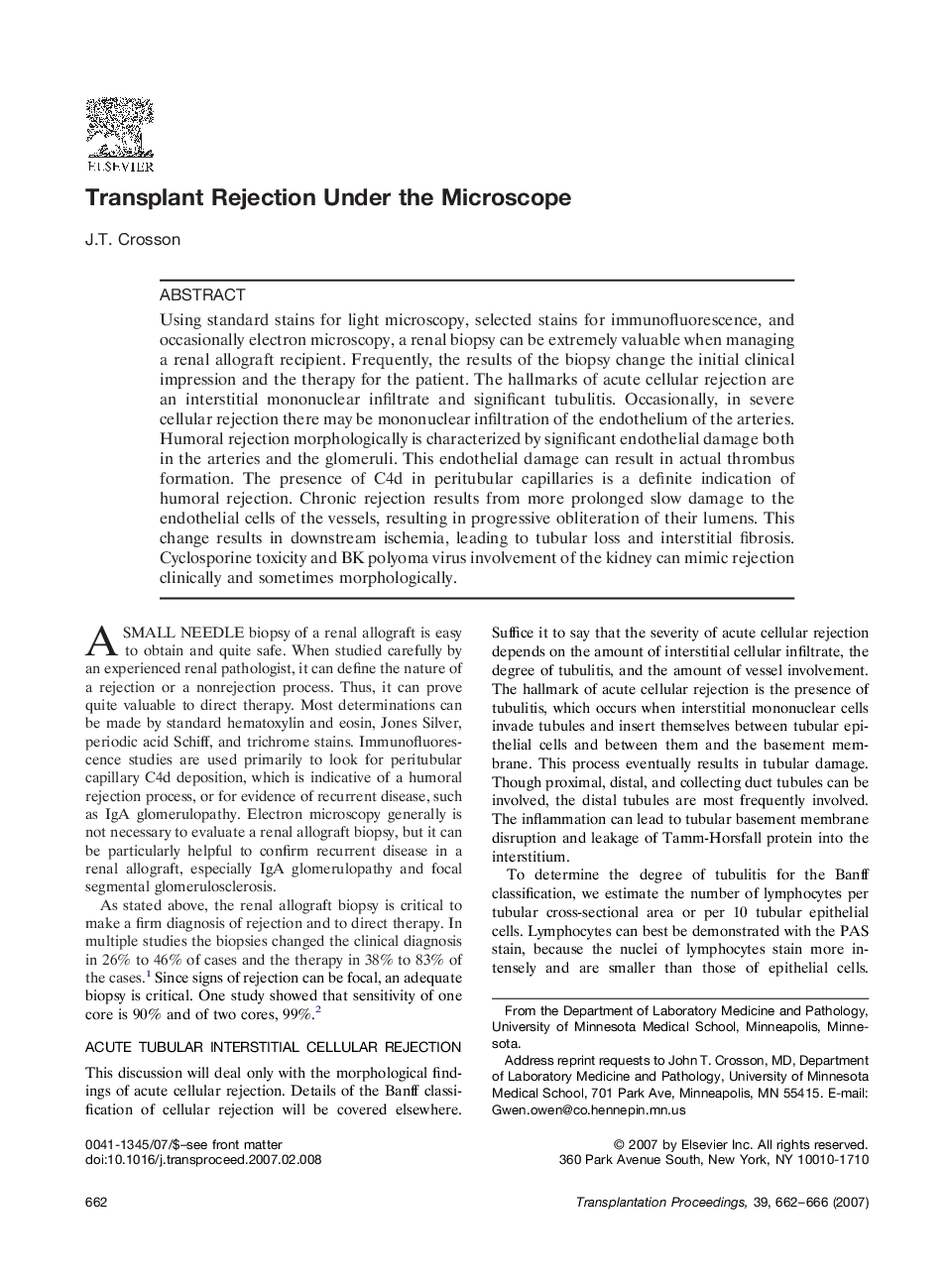| کد مقاله | کد نشریه | سال انتشار | مقاله انگلیسی | نسخه تمام متن |
|---|---|---|---|---|
| 4263184 | 1284617 | 2007 | 5 صفحه PDF | دانلود رایگان |

Using standard stains for light microscopy, selected stains for immunofluorescence, and occasionally electron microscopy, a renal biopsy can be extremely valuable when managing a renal allograft recipient. Frequently, the results of the biopsy change the initial clinical impression and the therapy for the patient. The hallmarks of acute cellular rejection are an interstitial mononuclear infiltrate and significant tubulitis. Occasionally, in severe cellular rejection there may be mononuclear infiltration of the endothelium of the arteries. Humoral rejection morphologically is characterized by significant endothelial damage both in the arteries and the glomeruli. This endothelial damage can result in actual thrombus formation. The presence of C4d in peritubular capillaries is a definite indication of humoral rejection. Chronic rejection results from more prolonged slow damage to the endothelial cells of the vessels, resulting in progressive obliteration of their lumens. This change results in downstream ischemia, leading to tubular loss and interstitial fibrosis. Cyclosporine toxicity and BK polyoma virus involvement of the kidney can mimic rejection clinically and sometimes morphologically.
Journal: Transplantation Proceedings - Volume 39, Issue 3, April 2007, Pages 662–666